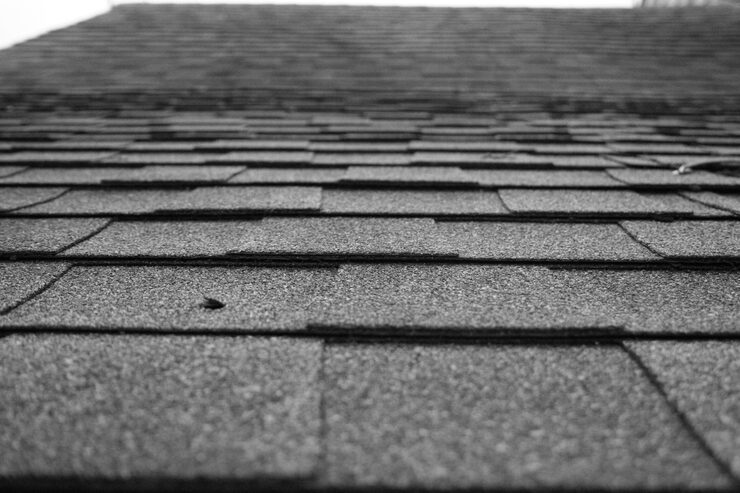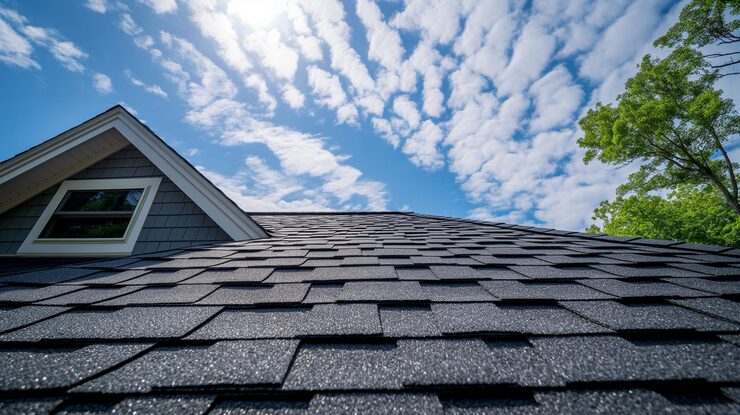
Table of Contents
Key Takeaways
✔ Poor installation, moisture, ventilation issues, and damaged materials are the most common reasons a roof develops waves.
✔ Fixing a wavy roof usually involves professional inspection, ventilation improvements, moisture control, and replacing damaged shingles or decking.
✔ Ripples in a roof often come from warped decking, trapped moisture, or improper shingle installation.
✔ A soft or spongy roof surface usually indicates moisture damage or rot in the decking that needs immediate attention.
✔ A new roof should not look wavy; noticeable unevenness usually signals installation errors or defective materials.
Wavy roofs are caused by underlying structural issues, poor installation, wind damage, inadequate ventilation, and defective materials. Solutions involve a professional roof inspection, fixing damaged decking or sheathing, ensuring proper roof alignment and ventilation, and replacing shingles if they are creased, cracked, or deteriorated.
What Does a Wavy Roof Indicate? Common Causes
Several factors can contribute to a wavy roof, from installation mistakes to environmental damage. Understanding these causes is the first step in figuring out why does my roof look wavy.
1. Poor Workmanship / Improper Installation
The quality of installation plays a major role in roof performance. When shingles are misaligned, not properly nailed, or installed without attention to detail, the result can be a visibly uneven surface. Wavy roof shingles often occur in cases where inexperienced contractors skip manufacturer guidelines or rush through projects.
Improper nailing can also cause shingles to lift slightly, creating ripples that distort the appearance of the entire roof. For homeowners questioning why does my roof look wavy shortly after a new installation, poor workmanship is usually the first suspect.
2. Warped Decking
The decking or sheathing beneath shingles serves as the foundation of the roof. When this wood absorbs moisture, it can swell and warp. Once distorted, the shingles above it naturally conform to the uneven surface, resulting in a wavy roof.
Warped decking is particularly problematic because it means the underlying structure is compromised. It is one of the clearest examples of what does a wavy roof indicate—that there is damage beyond just the visible shingles.
3. Inadequate Ventilation
Proper attic ventilation is essential to overall roof health. Without it, heat and humidity become trapped, creating conditions where decking and shingles expand, buckle, and ripple. Over time, this trapped moisture seeps into roofing materials, leaving the roofline looking uneven. Insulation also plays a key role by resisting heat flow, lowering heating and cooling costs, and keeping indoor spaces more comfortable.
When ventilation and insulation work together, they prevent excess heat buildup, reduce moisture problems, and protect the roof’s structure. For many homeowners wondering, why does my roof look wavy during the summer, the answer often lies in improving attic airflow and ensuring proper insulation—both immediate fixes and long-term prevention strategies.
4. Wind Damage
High winds can lift shingles, break their adhesive bonds, or cause them to settle unevenly once the storm passes. Over time, repeated wind stress leads to visible ripples and distortions. Wavy roof shingles caused by wind are especially concerning because they often allow water to seep underneath, leading to leaks.
A professional inspection after major storms helps determine how to repair a wavy roof before the damage worsens.
5. Moisture Problems
Moisture is one of the most destructive forces to roofing systems. When water penetrates the underlayment or lingers within the decking, the materials weaken and lose their shape. As they soften, shingles sink or buckle, creating a wavy roof effect that worsens over time.
Beyond damaging the roof itself, excessive moisture also creates conditions that can harm health, contributing to issues like mold growth, dust mites, cockroach infestations, and even peeling lead paint. Moisture-related ripples are therefore an alarming example of what a wavy roof indicates—it’s not just cosmetic but a sign of deeper water damage and potential health risks that may already exist.
6. Defective or Low-Quality Materials
The durability of a roof depends heavily on the quality of its materials. Thin, brittle, or improperly manufactured shingles may appear fine at installation but begin to warp within months. These defective materials are a frequent cause of wavy roof shingles and often frustrate homeowners who invested in a roof they expected to last decades.
In such cases, understanding how to repair a wavy roof may involve replacing defective shingles with higher-quality products.
7. Thermal Expansion
Roofs endure constant cycles of heating and cooling. During hot weather, shingles expand; during cold, they contract. If the attic has poor ventilation or if shingles were installed too tightly, this thermal expansion creates visible ripples.
Homeowners noticing changes in their roof’s appearance from season to season may wonder, why does my roof look wavy in summer but not in winter? The answer lies in thermal stress combined with installation practices.
How to Repair a Wavy Roof
Once the root issue is identified, there are reliable ways to fix it. Knowing how to repair a wavy roof ensures long-term protection and prevents wavy roof shingles from recurring.
1. Get a Professional Inspection
The first step in solving the problem is identifying the cause. A roofing professional can evaluate whether the issue is cosmetic or structural. Sometimes what a wavy roof indicates is nothing more than a minor installation flaw, but in other cases, it reveals extensive water damage or structural weakness.
Without a proper diagnosis, any attempt at how to repair a wavy roof may be ineffective.
2. Improve Attic Ventilation
Installing ridge vents, soffit vents, or attic fans helps regulate temperature and moisture levels. Improved ventilation not only reduces waviness but also extends the life of shingles. Many cases of wavy roof shingles improve or stabilize once airflow is addressed.
3. Address Moisture Issues
Leaks, damp underlayment, and condensation must be fixed before new shingles are installed. If ignored, moisture will continue warping materials, undoing any repair work. Roofing experts often emphasize this step when advising homeowners how to repair a wavy roof effectively.
4. Replace Damaged Materials
When shingles are creased, cracked, or warped, replacement is the only solution. Likewise, if decking is rotted or buckled, it must be repaired before re-shingling. Neglecting this step allows problems to resurface quickly.
New materials, properly installed, ensure the roofline looks smooth and stable—ending the cycle of why does my roof look wavy concerns.
5. Ensure Proper Shingle Installation
The most effective solution is professional installation by skilled roofers. Correct alignment, nailing, and sealing eliminate many of the common causes of a wavy roof. Choosing experienced contractors reduces the risk of wavy roof shingles and guarantees long-lasting performance.

What Causes Ripples to Form in a Roof?
Ripples generally form from poor installation, warped decking, or trapped moisture that distorts the surface beneath shingles. In many cases, wavy roof shingles are the most visible symptom of deeper structural issues that may not be obvious from the ground. For homeowners unsure what a wavy roof indicates, ripples are a clear signal to call for an inspection before hidden damage spreads further.
What Does It Mean if a Roof Feels Soft or Spongy?
A spongy roof usually points to moisture infiltration and rot in the decking, which weakens the entire structure over time. This condition shows what a wavy roof indicates in its most serious form—structural compromise that can no longer support shingles effectively. Repairs should be scheduled quickly, as delaying can lead to costly replacements, water leaks inside the home, and even safety hazards if the damage worsens.
Is It Normal for a Newly Installed Roof to Look Uneven or Wavy?
Minor unevenness may be temporary as shingles settle, but noticeable waviness on a new roof is not normal and should not be ignored. Often, it reflects poor workmanship, defective materials, or shortcuts taken during installation that compromise the roof’s integrity. In these situations, homeowners should consult a professional to determine how to repair a wavy roof before problems worsen, ensuring the investment in a new roof provides the durability and appearance expected.

Frequently Asked Questions
Can walking on a roof cause it to look wavy?
Yes, frequent foot traffic can damage shingles and compress decking, creating uneven spots that look wavy. Roofs are not designed for regular walking unless specifically reinforced. It’s best to avoid walking on them and use professionals for inspections or repairs.
Does roof age play a role in waviness?
Older roofs are more likely to show waviness as shingles deteriorate and decking weakens. Aging materials lose flexibility, making them prone to buckling. While maintenance helps, replacement is often the long-term fix for very old roofs.
Is a wavy roof dangerous?
A wavy roof can be dangerous if it signals rot or structural weakness. Even if it’s not an immediate hazard, it reduces the roof’s ability to protect against weather and water damage. Ignoring it risks more costly repairs or even collapse over time.
Can snow or ice make a roof look wavy?
Yes, heavy snow or ice can press down on shingles and decking, making the roofline look uneven. Usually, it settles back after melting, but repeated loads may cause lasting damage. Good insulation and ventilation reduce this risk.
How long does it take to repair a wavy roof?
Repair time depends on the cause. Small fixes like shingle replacement may take a day, while warped decking or ventilation repairs can take several days. An inspection is the best way to get an accurate timeline.
Protect Homes From Wavy Roof Problems in Poughkeepsie, NY!
Wavy or uneven shingles can quickly turn into costly repairs if left untreated. Homeowners in Poughkeepsie, NY, trust Lyndsey Roofing, LLC for expert inspections, repairs, and full replacements that restore roof integrity and improve curb appeal. With a focus on quality materials and precise installation, every project is handled to prevent future waviness and ensure long-term protection. From minor fixes to complete solutions, Lyndsey Roofing, LLC delivers reliable roofing services across Poughkeepsie, NY, and surrounding areas.
Contact Lyndsey Roofing, LLC today to schedule a professional roof inspection in Poughkeepsie, NY!







